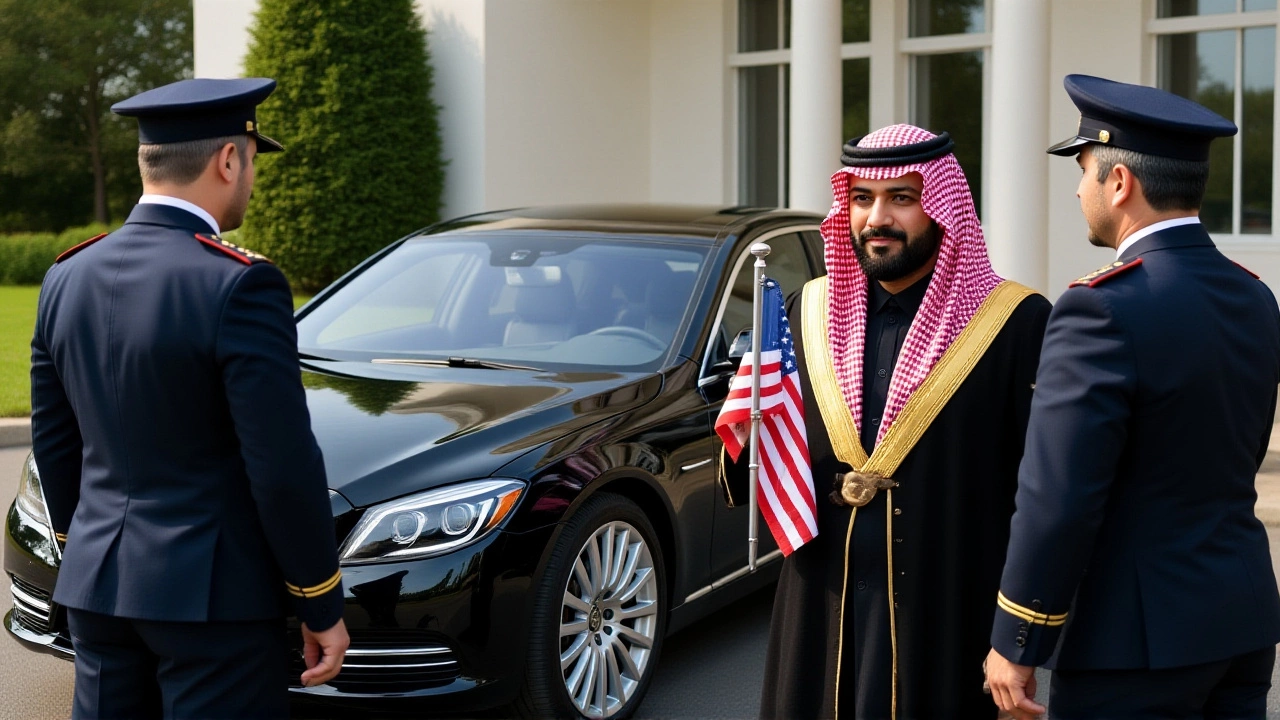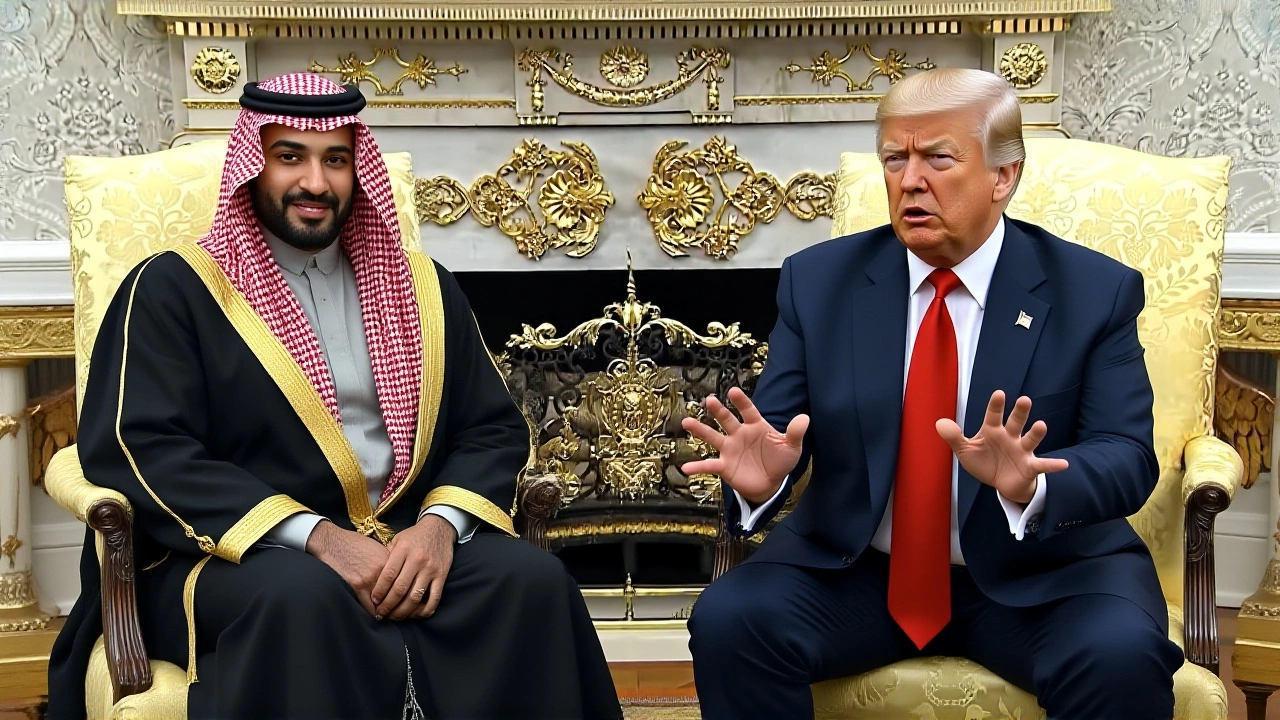
When Donald Trump stood at the podium in the White House East Room on November 18, 2025, and declared Saudi Arabia a major non-NATO ally, the room didn’t just fall silent—it held its breath. Three hours earlier, Crown Prince Mohammed bin Salman bin Abdulaziz Al Saud had announced, in front of a packed audience at the Grand Hyatt Washington, that Saudi Arabia would pour nearly $1 trillion into the U.S. economy over five years. The timing wasn’t coincidence. It was strategy. And it worked.
A Deal Forged in Real Time
The sequence was precise. At 10:23 a.m. Eastern Time, the Crown Prince, 39, unveiled the investment pledge during the U.S.-Saudi Strategic and Economic Partnership Forum. His words—“We are committing to increase our total investments in the United States to nearly $1 trillion within the next 5 years, building upon our current $600 billion portfolio”—were met with polite applause. But by 2:10 p.m., when Trump responded with the formal designation, the applause turned into a standing ovation from defense contractors, energy executives, and diplomats alike. The U.S. Department of State confirmed the designation grants Saudi Arabia priority access to U.S. military hardware, pre-positioned weapons stockpiles, and, critically, the ability to buy classified technologies previously reserved for NATO members. The move elevates the Kingdom to the 18th nation to receive this status since its creation by Congress in 1987. Others include Japan, Australia, Egypt, and Qatar—but none have made a financial commitment on this scale.The Investment Engine: Saudi Aramco and the PIF
The $1 trillion pledge isn’t abstract. It’s anchored in concrete assets. Saudi Aramco, the world’s most profitable company with $603.5 billion in 2024 revenue, will lead the charge through its U.S. subsidiary, Saudi Aramco Americas. Already operating 15 facilities—from refineries in Texas to tech hubs in Silicon Valley—it’s poised to expand aggressively. The Public Investment Fund (PIF), chaired by the Crown Prince, has already grown Saudi holdings in America from $17.3 billion in 2016 to $600.2 billion by September 2025, according to the U.S. Chamber of Commerce. The bulk of the new investment will target infrastructure, clean energy, and advanced manufacturing. One unnamed executive at a Detroit-based auto supplier told me, “We’re already getting calls from Riyadh about joint ventures for electric truck batteries. They’re not just writing checks—they’re building factories.”Military Access and the F-35 Gambit
The military side of the deal is even more consequential. During closed-door talks at the Pentagon, U.S. Air Force Secretary Frank Kendall III and Saudi Defense Minister Prince Khalid bin Salman (the Crown Prince’s younger brother) discussed the sale of up to 50 F-35A Lightning II fighter jets at $78 million each. The catch? Saudi Arabia must meet NATO interoperability standards by December 31, 2027. That means overhauling its command systems, training pilots in joint ops protocols, and opening its airbases to U.S. inspection teams. It’s a high-stakes bet. The F-35 is the most advanced stealth fighter in the world. Giving it to Saudi Arabia—even conditionally—signals a seismic shift in U.S. defense policy. The last time the U.S. transferred such capabilities to a non-NATO partner was to Israel in 2010. And even then, it came with strings attached.
A Reset After the Khashoggi Shadow
Let’s be clear: this isn’t just economics or defense. It’s a reckoning. The murder of journalist Jamal Khashoggi in Istanbul on October 2, 2018, shattered trust. The 2021 U.S. intelligence report that named the Crown Prince as approving the operation made the idea of a close alliance unthinkable—at least publicly. For years, U.S. lawmakers blocked arms sales and froze high-level visits. But the world changed. The war in Ukraine drained NATO resources. China’s influence in the Gulf grew. And Saudi Arabia, under the Crown Prince, became the most powerful economic engine in the Arab world. Dr. Kristian Ulrich Coyle, Senior Fellow at the Council on Foreign Relations, put it bluntly: “This designation represents the most significant elevation of Saudi-U.S. military relations since the 1945 Quincy Agreement, but it carries risks given Saudi Arabia’s human rights record and ongoing involvement in Yemen.”What Comes Next? The Task Force and the Clock
The formal designation takes effect 90 days after Congress is notified—scheduled for February 16, 2026. Until then, a joint U.S.-Saudi task force will meet quarterly at the Harry S Truman Building in Washington, D.C. The first meeting, on December 10, 2025, will lock in F-35 technical specs and investment timelines. Meanwhile, Saudi Aramco is reportedly in advanced talks to build a $15 billion hydrogen fuel plant in Louisiana. The PIF is eyeing stakes in U.S. semiconductor firms. And the White House is quietly drafting new export control rules to allow Saudi access to AI-driven targeting systems.
Why This Matters
This isn’t just about oil. It’s about who controls the future of energy, defense, and technology in the 21st century. The U.S. is betting that economic interdependence will moderate Saudi behavior. Saudi Arabia is betting that military access will give it leverage against Iran and China. The gamble? It’s enormous. But for now, the numbers don’t lie: $1 trillion in investments. A new military alliance. A former adversary now standing shoulder-to-shoulder at the highest table.Frequently Asked Questions
How does this affect U.S. jobs and the economy?
The $1 trillion investment is projected to create between 1.2 million and 1.8 million U.S. jobs over five years, primarily in manufacturing, energy, and infrastructure, according to the U.S. Chamber of Commerce. Saudi Aramco’s expansion in Texas and Louisiana alone could add 150,000 direct jobs, while PIF-backed ventures in AI and semiconductors may spawn thousands more in tech hubs like Austin and Boston.
Why now? What changed since the Khashoggi murder?
The geopolitical calculus shifted. With Russia’s war in Ukraine straining NATO, and China deepening ties with Iran and Pakistan, the U.S. needs a stable Gulf partner. Saudi Arabia, under Mohammed bin Salman, has become the region’s dominant economic force. The Khashoggi issue remains a moral stain, but economic and security interests have overtaken human rights concerns in policy decisions—something seen before with Egypt and Turkey.
Will Saudi Arabia get nuclear technology?
No. The designation does not include nuclear technology transfers. U.S. law still prohibits the export of enrichment or reprocessing capabilities to non-NATO allies without explicit congressional approval. While Saudi Arabia has expressed interest in civilian nuclear energy, any such program would require strict IAEA safeguards and would be subject to intense scrutiny. The focus remains on conventional arms and dual-use tech like AI and cyber systems.
How does this impact U.S.-Iran relations?
It escalates tensions. Iran has already condemned the designation as a “provocation.” With Saudi Arabia now armed with advanced U.S. jets and intelligence-sharing access, Tehran sees the move as a direct threat to its regional influence. The risk of proxy conflict in Yemen, Syria, or even the Strait of Hormuz increases. U.S. military planners are already updating contingency scenarios for potential Iranian retaliation.
What happens if Saudi Arabia doesn’t meet the F-35 standards by 2027?
The F-35 sale would be suspended. The U.S. Department of Defense has made it clear: no exceptions. Saudi Arabia would need to reapply, likely after a full audit of its defense reforms. Past cases show that even close allies like Australia took over two years to meet interoperability benchmarks. If Saudi Arabia fails, it risks losing credibility—and future access to U.S. tech—in the eyes of Washington’s defense establishment.
Is this a permanent alliance?
Not legally. Major non-NATO ally status is a designation, not a treaty. It can be revoked by the President with congressional notification. But politically, reversing it after a $1 trillion investment and F-35 deal would be seen as a betrayal. The bond is cemented by money, not just paper. It would take a major scandal—like another state-sponsored killing or a direct attack on U.S. forces—to trigger a reversal.


